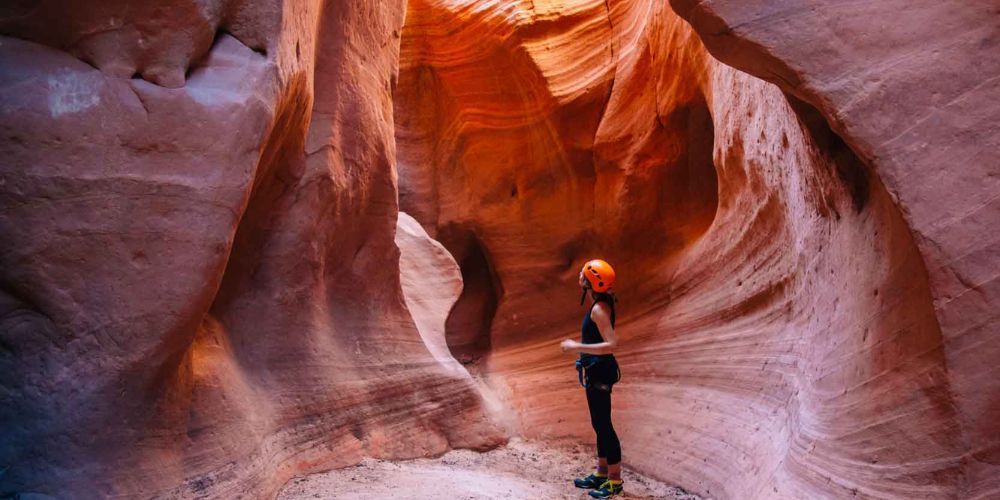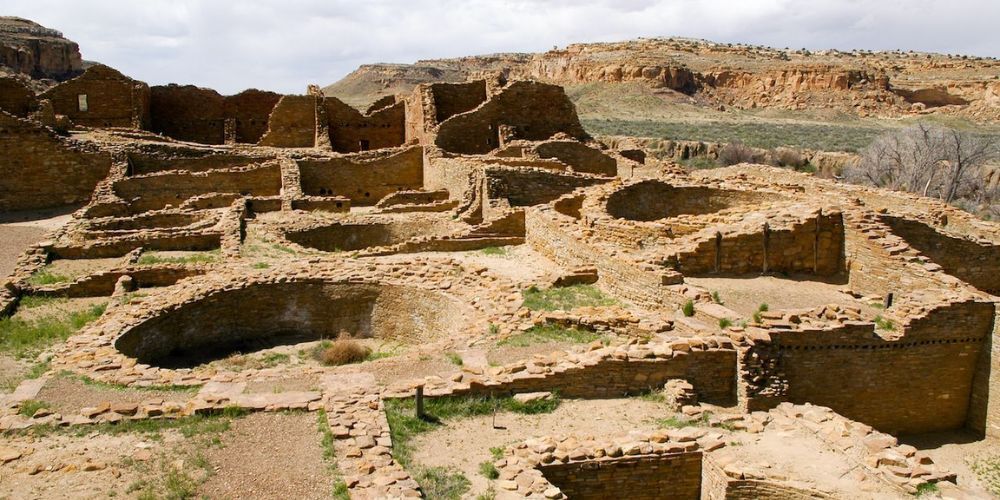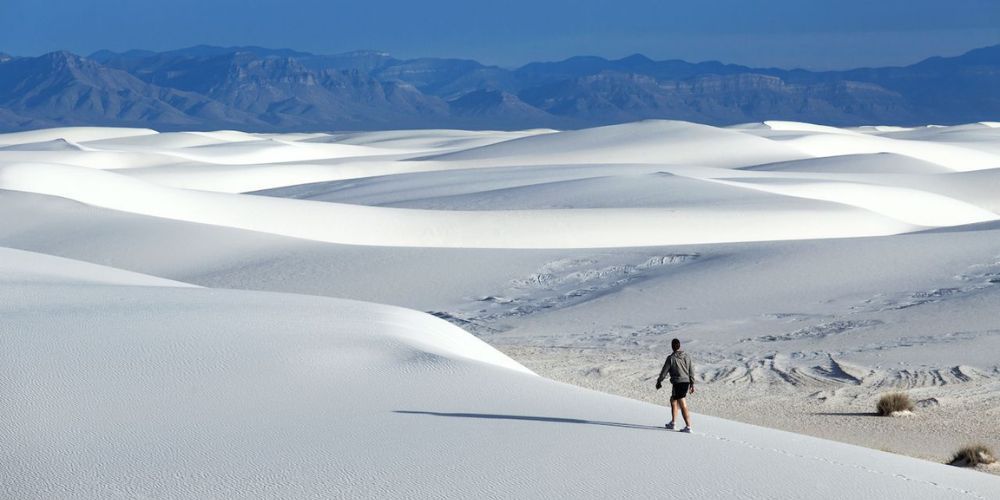Hiking in New Mexico: Discover the Best Trails for Outdoor Adventure
Hiking in New Mexico reveals an array of landscapes as diverse as they are stunning. From arid deserts with sprawling gypsum dunes to lush alpine forests perched high above sea level, the state's scenery surprises at every turn. Trails like La Luz offer breathtaking views from over 3,000 feet up, while White Sands National Park’s unique backdrop makes every step feel like an exploration of another planet. These are not just paths through nature; they are journeys through different worlds.
The preparation for these adventures is essential too, given New Mexico's varied terrain and climate. With careful planning rooted in extensive research and local insights, you'll be equipped to tackle these trails safely while soaking up all the beauty around you. As we explore these remarkable hiking destinations, we’ll also dive into tips that ensure your experience remains enjoyable and secure.
The top 3 hiking trails in New Mexico are the Wheeler Peak Trail, the Pecos Wilderness Trails, and the Tent Rocks Trail. Each of these trails offers stunning scenery and a variety of difficulty levels to cater to hikers of all experience levels.

Top New Mexico Hiking Trails You Must Explore
New Mexico boasts a diverse range of hiking trails, each with its own unique charm and beauty. One such trail is the La Luz Trail, starting in Albuquerque. This 7.5-mile trail is not for the faint-hearted, as it climbs over 3,000 feet to the Sandia Crest.
The La Luz Trail is a thrilling challenge that rewards hikers with stunning views of Albuquerque, showcasing the city from a whole new perspective. What's truly marvelous about this trail is its ability to transition hikers through various landscapes, from the arid desert to the refreshing alpine forests. It's an experience that encapsulates the striking contrasts of New Mexico's natural beauty, all within a single hike.
Now, White Sands National Park offers another enchanting destination for hikers. The park is renowned for its expansive gypsum dunes, creating a surreal and almost otherworldly landscape. The 5-mile long Alkali Flat Trail is a popular choice here due to its moderate difficulty level and its breathtaking setting against the unique backdrop of White Sands.
As you traverse the Alkali Flat Trail, you'll find yourself surrounded by undulating waves of pure white sand dunes, shimmering under the New Mexico sun. The contrast between the cerulean sky and the ivory sands creates a visual treat that makes this experience nothing short of magical.
Much like pieces of a puzzle coming together to form a breathtaking picture, these unique natural elements combine to make your hike an unforgettable adventure.
Moving on to Wheeler Peak, which stands as the highest point in New Mexico at 13,161 feet. This challenging 8.2-mile trail isn't for the casual hiker, but those who tackle it are rewarded with panoramic views of Taos Ski Valley and beyond.
As we dive into the world of essential gear for your New Mexico hike, it's worth considering how these unique trails demand both preparedness and appreciation for nature's wonders.
Essential Gear for Your New Mexico Hike
As you ready yourself for a hike in the breathtaking landscapes of New Mexico, it's essential to have the right gear to maximize your outdoor adventure. The terrain can be rugged and varied, so having the proper equipment is crucial for both comfort and safety. Let's explore the key items you should have as part of your hiking ensemble.
Footwear
Imagine your feet as the wheels of a car; if they're not properly equipped to navigate varying terrains, it’s going to be a bumpy ride. When hiking in New Mexico, sturdy hiking boots with good ankle support are crucial. The rocky and uneven ground requires footwear that provides stability and protection. Look for boots with a firm grip on the sole to prevent slipping and ankle support to minimize the risk of injury on uneven terrain.
Hydration System
New Mexico's arid climate demands a dedicated approach to hydration. A hydration pack or multiple water bottles are essential to keep you hydrated throughout your hike. Dehydration can set in quickly under the intense sun and dry air, so it’s crucial to carry an adequate water supply. Consider a hydration pack that allows hands-free operation, making it easier to drink while on the move.
Navigation Tools
While many popular trails are well-marked, venturing off into less-traveled paths may require reliable navigation tools. A detailed trail map, a compass, and a GPS device can be invaluable in case you find yourself off the beaten track. Even experienced hikers can benefit from these tools, especially when visibility is compromised due to unpredictable weather conditions.
Sun Protection
New Mexico’s higher elevations often mean more intense exposure to the sun, making sun protection crucial for a pleasant hiking experience. Invest in quality sunglasses with UV protection to shield your eyes from harmful rays. Additionally, a wide-brimmed hat offers shade and helps prevent sunburn on your face and neck. Don't forget to apply a high SPF sunscreen (30+), protecting any exposed skin from sunburn - including areas often overlooked like the back of your neck and ears.
Equipped with these essentials, you’ll be well-prepared to tackle a variety of trails in New Mexico, ensuring a safe, enjoyable, and memorable hiking experience amidst its breathtaking natural beauty.
Now let's shift our focus to essential safety tips for exploring the magnificent trails of New Mexico without hindrance.
Safety Tips for New Mexico Trails
When you're out hiking in New Mexico, nothing is more vital than your safety. The trails can be thrilling and beautiful, but they come with their own set of risks. From dehydration to wildlife encounters, being aware and prepared is crucial for a successful hike.
Stay Hydrated
Dehydration in New Mexico's dry climate is a significant risk for hikers. With the arid air and high elevation, your body may lose fluids more quickly than you realize. It's critical to prioritize hydration. Aim to drink at least a liter of water every two hours, even if you don't feel thirsty. By establishing this routine, you can prevent the onset of heat-related illnesses and keep your energy levels up throughout the hike.
Watch the Weather
New Mexico's weather can be unpredictable, especially during the monsoon season (July to September). Flash floods are a real danger in certain areas, occurring suddenly without warning. Always check the weather forecast before heading out on a hike. Avoid trails during severe weather conditions to ensure your safety. Being prepared with knowledge about the weather will help you make informed decisions and mitigate potential risks.
Wildlife Awareness
While exploring New Mexico's trails, it's essential to be mindful of the local wildlife, including rattlesnakes and black bears. To avoid surprising wildlife, make noise while hiking, especially around blind corners or dense vegetation. This alerts animals to your presence and reduces unexpected encounters. Knowing how to react if you encounter these animals is crucial for your safety and the well-being of the wildlife.
First Aid Kit
A basic first aid kit is an indispensable companion on any hiking excursion. In New Mexico's rugged terrain, minor injuries like cuts or scrapes are common, and encountering cactus spines is a possibility too. Always carry bandages, disinfectants, and tweezers for such incidents.
These safety tips are designed to optimize your hiking experience by minimizing potential risks and ensuring your well-being on the trails.
Choosing the Right Trail Elevation
Choosing the Right Trail Elevation
hen planning a hiking adventure in New Mexico, considering trail elevation is vital for ensuring an enjoyable and safe experience. The state’s diverse topography offers a spectrum of elevations, each accompanying its unique set of challenges and requirements. Let’s break it down to help you make an informed decision about which trail best fits your abilities and goals.
Low Elevation
Trails below 5,000 feet, such as those in Carlsbad Caverns, are ideal for beginners and individuals acclimating to New Mexico's unique environment. Hiking at lower elevations means encountering dense air with ample oxygen, making breathing easier. Additionally, the terrain tends to be gentler, offering a smoother introduction to hiking.
Hikers seeking a more leisurely pace will find these trails accommodating, allowing them to relish the natural beauty without feeling overly strained. The Carlsbad Caverns’ trails showcase stunning views and fascinating geological formations, making them perfect for those who wish to combine light physical activity with exploration and education.
Mid Elevation
Trails situated between 5,000 and 8,000 feet, such as those found in Bandelier National Monument, offer a moderate increase in difficulty. This range provides challenges suitable for intermediate hikers, with the effects of thinner air becoming noticeable compared to lower elevations. The terrain becomes more varied, featuring moderate inclines and moderately rugged paths.
Hiking at mid elevations demands a slightly higher level of stamina and endurance due to increased physical demand caused by elevation changes. These trails strike a balance - they're challenging enough to provide a sense of accomplishment while remaining accessible to hikers who are building their skills and fitness levels.
High Elevation
Trails located above 8,000 feet, like the Santa Fe Baldy Trail, present a whole new level of challenge. At this elevation, hikers face thinner air, making breathing more difficult—especially for those unaccustomed to it. The terrain becomes rugged with steep inclines and rocky paths that demand good physical condition and experience in hiking at high elevations.
These high elevation trails offer breathtaking vistas but require careful planning and preparation. Venturing onto these routes necessitates an awareness of physical limitations, proper gear, water, emergency supplies, and allowing ample time for acclimatization—adjusting to the lower oxygen levels often found at higher altitudes.
Understanding what each elevation range entails will help you make an informed decision when selecting a trail for your hiking adventure in New Mexico. Whether you're a beginner looking for a gentle introduction or an experienced hiker seeking new challenges, considering trail elevation is crucial for ensuring an enjoyable and safe outdoor experience.
Now equipped with the knowledge of choosing the right trail elevation for your adventure in New Mexico, let's turn our attention towards uncovering the incredible physical and mental benefits that hiking offers.

Physical and Mental Benefits of Hiking
Hiking isn't just about putting one foot in front of the other; it offers a myriad of health benefits that can significantly impact your overall well-being. Let's take a closer look at the fascinating ways in which hiking enhances both your body and mind.
Physical Health
Hiking provides a full-body workout that can improve your cardiovascular fitness, strengthen muscles, and aid in weight loss. The varying terrains and elevations encountered during a hike engage different muscle groups, promoting balance and agility, while the continuous movement of walking uphill and downhill helps build leg strength and endurance. According to a study published in the American Journal of Lifestyle Medicine, hikers can burn up to 500 calories per hour on the trail, making hiking an excellent exercise for those looking to maintain or lose weight. Moreover, the cardiovascular benefits associated with hiking can contribute to a healthier heart and reduced risk of chronic diseases.
Mental Well-being
Time spent in nature has been shown to reduce stress levels and boost mood. When you're surrounded by natural beauty, the sights, sounds, and scents have a calming effect that reduces anxiety and tension. Research from Stanford University highlighted the positive impact of walking in natural environments, demonstrating a decrease in symptoms of depression. Beyond reducing stress, spending time outdoors can also spark creativity. Nature's therapeutic effects have been observed to stimulate the mind, leading to enhanced problem-solving skills and innovative thinking. The mental clarity achieved while hiking allows for introspection, helping individuals find peace amid life's pressures.
Imagine ascending a picturesque mountain trail. As you navigate through lush greenery, your mind becomes attuned to the rhythm of nature. The tranquility of the setting allows your thoughts to flow freely, unburdened by the stresses of everyday life. This sense of calmness fosters mental rejuvenation, leaving you feeling refreshed and invigorated.
It's remarkable how something as simple as a hike through the woods or across rugged terrain can have such far-reaching effects on both our bodies and minds. These holistic advantages make hiking an exceptional activity for anyone seeking to improve their physical fitness while nurturing their mental well-being.
Now that we've explored the incredible benefits of hiking, it's clear that venturing into the great outdoors offers boundless rewards for your health and happiness.

Preparation Tips for an Unforgettable Hike
Preparing for a day on the trails might seem like a simple task, but it can make all the difference between just another walk and a remarkable outdoor adventure. Here’s how you can ensure you’re fully prepped for a successful outing.
Plan Your Route
Before setting foot on your chosen trail, arm yourself with knowledge about the terrain, difficulty level, and any specific features or attractions. Utilize user-friendly websites and local guidebooks to find detailed maps and extensive trail reviews. This helps provide valuable insight into the trail and ensures that you are mentally prepared for your hike.
Understanding your route minimizes the risk of getting lost, unearths hidden gems along the way, and presents an opportunity to anticipate potential challenges or obstacles—allowing you to gauge whether the trail matches your skill level and interests.
Pack Smart
When it comes to packing, striking the perfect balance between carrying essential items and keeping your load lightweight is key. In addition to standard hiking gear such as water, first aid kit, navigation tools, and sun protection, consider bringing along energy-boosting snacks like nuts and dried fruit. These portable treats provide a quick source of sustenance during the hike. Don't forget to tuck away a waterproof, lightweight rain jacket and thermal layer in your backpack, as weather conditions can change unexpectedly.
Nuts and dried fruits are rich in nutrients and provide sustainable energy—essential for long hikes. As for attire, temperatures can fluctuate during outdoor activities, so having a jacket and an insulating layer on hand ensures you're equipped for whatever Mother Nature throws your way.
Inform Someone
While an exhilarating hike can be freeing and empowering, safety should always come first. Before embarking on your journey, let a friend or family member know your hiking plan in detail—the starting point, expected duration, estimated return time, and alternative emergency contacts. This precautionary measure provides added security by ensuring that someone is aware of your whereabouts in case of unexpected circumstances.
Imagine being stranded due to unexpected bad weather or losing track of time during exploration—having someone informed about your plan could potentially save the day.
Acclimate to Altitude
If you're planning on tackling challenging trails at higher elevations, acclimatization is crucial. Spend a day or two at the elevated location before attempting the more demanding hikes, allowing your body to gradually adjust to the thinner air. Acclimating to altitude not only helps prevent altitude sickness but also enhances endurance during strenuous hikes at higher elevations.
Think of it as a practice run; just like athletes train before competing in high-stakes events, acclimating prepares your body for the challenges ahead.
With these preparation tips in mind, you'll set out on your hike feeling confident, well-equipped, and ready for an unforgettable outdoor expedition.
Armed with these essential preparation tips, you're now geared up to explore the ideal seasons for hiking in New Mexico—a crucial factor to consider before hitting the trails.
Ideal Seasons for New Mexico Hiking
New Mexico boasts a diverse landscape with areas to explore all year round. Understanding the distinct characteristics of each season can significantly enhance your hiking experience.
Spring (March to May)
In spring, New Mexico blossoms into a paradise of wildflowers and pleasant temperatures. Areas such as the Organ Mountains showcase captivating displays of colorful blooms, creating picturesque scenery for hikers. The moderate weather makes it an ideal time for longer treks and overnight camping trips, providing a comfortable environment for enjoying the natural beauty of the state.
Summer (June to August)
During summer, New Mexico experiences warmer temperatures, but early morning or late afternoon hikes offer relief from the scorching midday heat. Higher altitude destinations, like the Sangre de Cristo Mountains, provide cooler and more enjoyable conditions for hikers. The contrast between lush greenery and clear blue skies in these higher elevations is a sight to behold—creating a serene environment for hiking excursions.
Fall (September to November)
Stunning foliage changes and cooler temperatures make autumn an excellent time for hiking in New Mexico. The Jemez Mountains are particularly popular during this season due to their vibrant display of fall colors. The crisp air and panoramic views transform these mountain ranges into a captivating canvas, making fall hikes a truly enchanting experience.
Winter (December to February)
Even in winter, New Mexico doesn't disappoint when it comes to hiking opportunities. Lower elevation trails remain accessible throughout the season, offering hikers the chance to explore breathtaking landscapes without heavy snowfall hindering their journey. For those seeking a unique adventure, snowshoeing in higher elevations such as the Carson National Forest provides an unparalleled winter hiking experience filled with stunning snowy vistas and peaceful solitude.
With each season presenting its own unique set of natural wonders, New Mexico offers hikers an array of experiences throughout the year, making any season an ideal time for outdoor adventure.
Embarking on a hiking adventure in New Mexico promises a remarkable journey through diverse landscapes brimming with natural splendor. Whether you’re captivated by wildflowers in spring or enchanted by snow-capped vistas in winter, New Mexico’s hiking trails beckon outdoor enthusiasts all year long.
Author: William Flaiz
